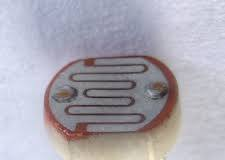From blinking LEDs to building future scientists—one sensor at a time.
Ever had a student ask, “Why do we need math or science in real life?” Good news: IoT sensors are the mic drop answer to that question. These tiny gadgets bring STEM to life by collecting real-world data that students can analyze, visualize, and actually care about.
Whether you’re monitoring your school garden’s soil moisture or turning a science fair project into a full-blown smart city prototype, IoT sensors are where classroom theory meets real-world tech.
Let’s explore how these little devices are turning classrooms into mini research labs.
What Exactly Is Real-World Data Collection?
It’s everything that makes science feel legit
:
- Taking real-time measurements
- Logging values over time
- Using data to make decisions (like when to water plants or turn on a fan)
- Building problem-solving and data literacy skills
IoT sensors make it possible for students to see invisible things—like air quality, humidity, or UV light—and use that info to act like engineers, scientists, or even weather reporters!
Top IoT Sensors That Spark Real-World Thinking
Here are some student-friendly sensors that double as real-world learning machines:
1. Soil Moisture Sensor
Teaches water conservation, agriculture science, and environmental monitoring.
Real-world task: “When should we water the school garden?”
STEM focus: Data collection + graphing + automation
2. DHT11/DHT22 – Temperature & Humidity Sensor

Helps students monitor classroom climate, design weather stations, and explore thermodynamics.
Real-world task: “How does temperature change in different parts of the school?”
STEM focus: Data trends + averages + sensor placement
3. Air Quality Sensor (MQ-135) 
Introduces pollution tracking, chemistry, and environmental engineering.
Real-world task: “How clean is the air in the science lab vs the hallway?”
STEM focus: Data logging + health science + urban planning
4. Light Sensor (LDR)

Used for energy efficiency, solar tracking, and plant science projects.
Real-world task: “Which window has the best light for growing plants?”
STEM focus: Experiment design + comparison + conclusions
Tools to Collect, Visualize & Share Data
Using sensors is only half the fun. Let students become data scientists by logging, charting, and sharing results.
Use platforms like:
- Blynk – Easy dashboards
- ThingSpeak – Data analytics with graphs
- Adafruit IO – Visual dashboards & triggers
- Tinkercad/ Wokwi – Simulate before you build
Long-tail keywords: How to connect sensors to a smart irrigation system, Step-by-step guide to using IoT sensors in smart gardening
Project Ideas That Teach Real-World Data Collection
Plant Growth Tracker
Sensors: Soil Moisture + Light
- Log daily readings and chart them with plant height
- Hypothesis: “More light = faster growth?”
Air Quality Mapping of the School
Sensors: MQ-135 + GPS
- Collect air quality data from different rooms
- Map cleanest vs most polluted spots
Temperature Analytics of the Classroom
Sensors: DHT11
- Measure hourly changes
- Identify hot/cold zones and optimize fan placement
Water Tank Overflow Detector
Sensors: Water Level Sensor + Buzzer
- Stop the flood before it starts!
- Graph water usage trends over a week
Teacher Tips for Making Data Fun (and Real)
Start with one sensor and one question: “What do we want to know?”
Use real-time dashboards to make abstract numbers feel tangible
Encourage students to form hypotheses and test them
Use the data for cross-subject connections: Math, Science, Geography, and even Art!
Why This Matters
Teaching data collection through IoT sensors helps students:
- Understand scientific inquiry
- Get hands-on with technology
- Learn to interpret graphs and datasets
- Connect STEM to real-world challenges like climate change, pollution, and resource management
It also sneaks in important 21st-century skills like critical thinking, data literacy, and even coding basics.
Final Thoughts: STEM Just Got Real
When students see their sensor data go live, they’re not just learning science—they’re doing science. And the best part? They’re solving actual problems that matter, from saving water to tracking air quality.
With a few sensors and a cloud dashboard, the classroom becomes a mini research lab, and your students become the engineers and problem-solvers of tomorrow.

